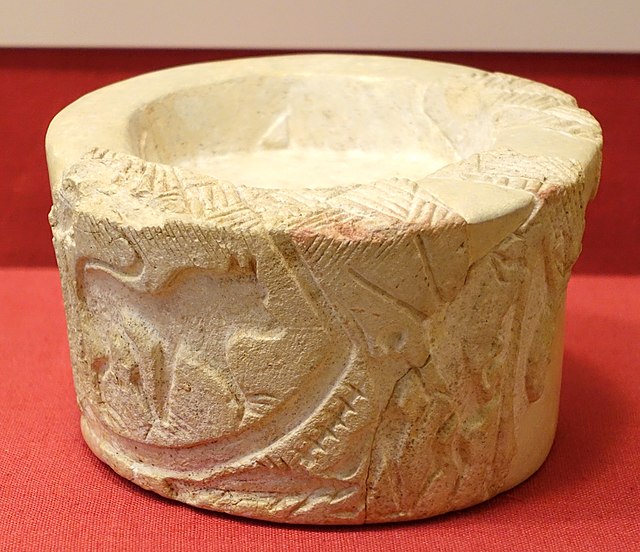The A-Group culture was an ancient culture that flourished between the First and Second Cataracts of the Nile in Lower Nubia. It lasted from c. 3800 BC to c. 3100 BC.
The Relief of Gebel Sheikh Suleiman likely shows the victory of an early Pharaoh, possibly Djer, over A-Group Nubians circa 3000 BC, nearly dating back to the First Dynasty. This rock carving represents an Egyptian campaign into Nubia and was found near the second cataract of the Nile River.
Vessels of the A-Group, Musée du Louvre
A-Group incense burner found at Qustul
Bowl with exterior painted scallop decoration, Qustul, Cemetery V, tomb 67, A-Group, 3800-3000 BC, ceramic - Oriental Institute Museum, University of Chicago
Lower Nubia is the northernmost part of Nubia, roughly contiguous with the modern Lake Nasser, which submerged the historical region in the 1960s with the construction of the Aswan High Dam. Many ancient Lower Nubian monuments, and all its modern population, were relocated as part of the International Campaign to Save the Monuments of Nubia; Qasr Ibrim is the only major archaeological site which was neither relocated nor submerged. The intensive archaeological work conducted prior to the flooding means that the history of the area is much better known than that of Upper Nubia. According to David Wengrow, the A-Group Nubian polity of the late 4th millenninum BCE is poorly understood since most of the archaeological remains are submerged underneath Lake Nasser.
Lower Nubia lies mainly between the first and second cataracts with some historical overlappings.





